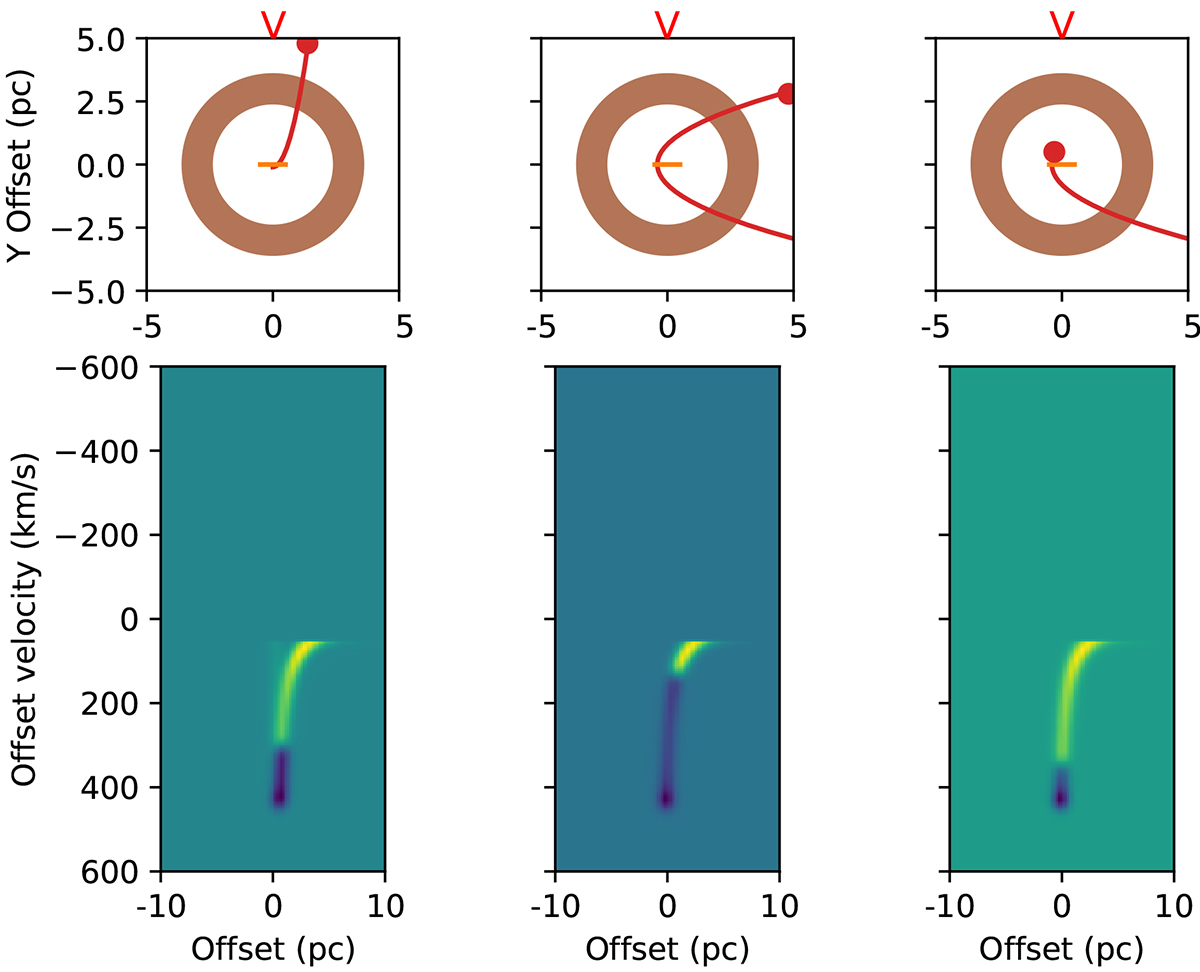Fig. 10.

Download original image
Parabolic trajectories of a filament of clouds approaching the peritrypa in three simulations. The top drawings illustrate the orbits in the plane of the filament, while the bottom series illustrate synthetic PV diagrams derived from the system of filament plus continuum source that can be compared with the actual observations in Fig. 7. In each case, the observer views the system from the top (red ‘V’ mark). The orange bar indicates the continuum source; clouds in front of this from the observer's point of view are seen in absorption, otherwise in emission. The red dot indicates where the orbit enters the field of view. The brown circle at 3 pc radius indicates the typical radius of the molecular disc described in this paper. To avoid a collision between the disc and the orbital plane of the filament, the latter must be somewhat inclined with respect to that of the disc. The 3D rendering of the first model is shown in Fig. 11, which illustrates the relative orientations of the disc, filament, continuum source, and observer for this case. The three models are: (left panel) a trajectory seen along the parabolic axis, in which the distance of closest approach is 0.1 pc (see text) and the orbit is truncated at this point; (middle panel) the parabolic axis is perpendicular to the line of sight; and (right panel) same as in the middle panel, but the filament only begins just before peritrypa. Velocities within ±80 km/s of systemic are suppressed. The synthetic PV distributions are convolved with a Gaussian of 0.5 pc in the spatial direction to simulate the ALMA resolution.
Current usage metrics show cumulative count of Article Views (full-text article views including HTML views, PDF and ePub downloads, according to the available data) and Abstracts Views on Vision4Press platform.
Data correspond to usage on the plateform after 2015. The current usage metrics is available 48-96 hours after online publication and is updated daily on week days.
Initial download of the metrics may take a while.


